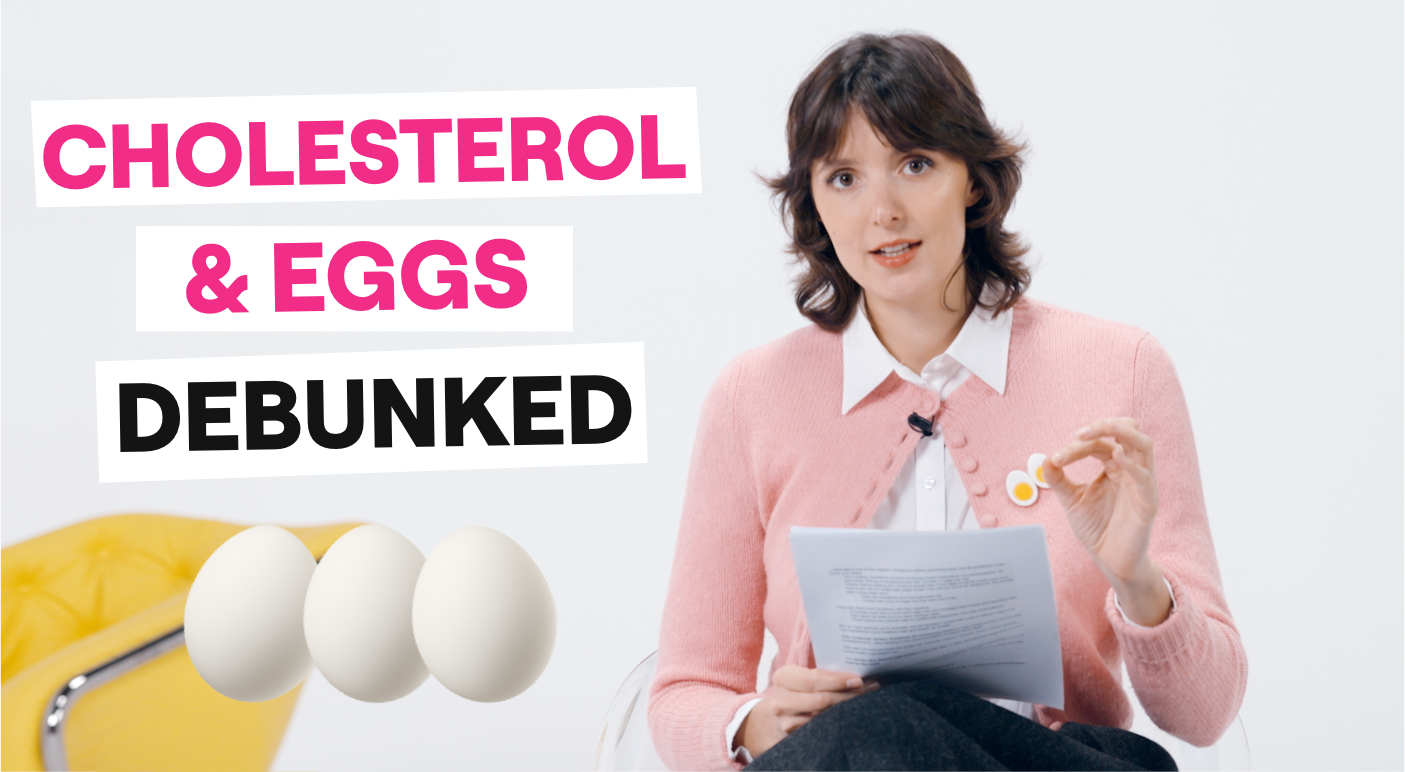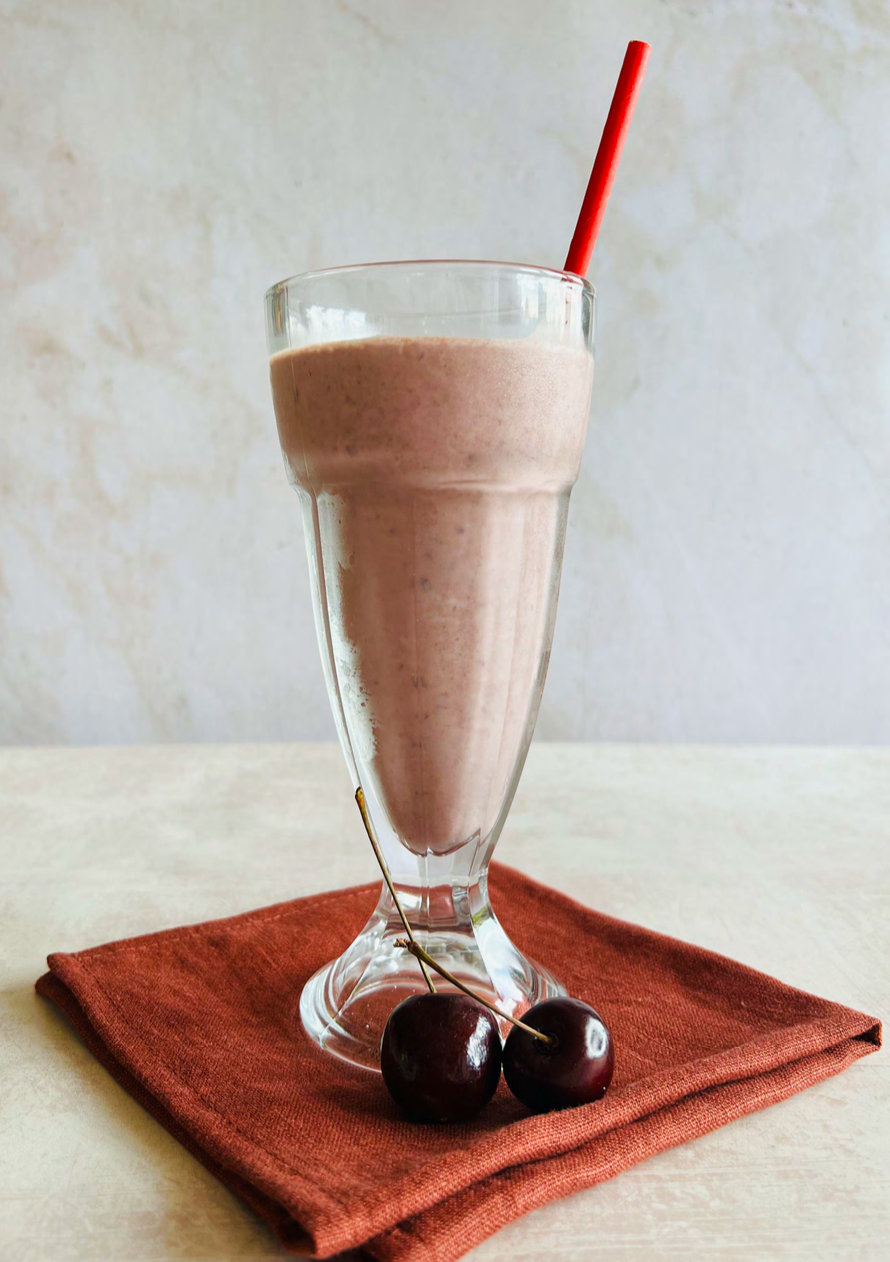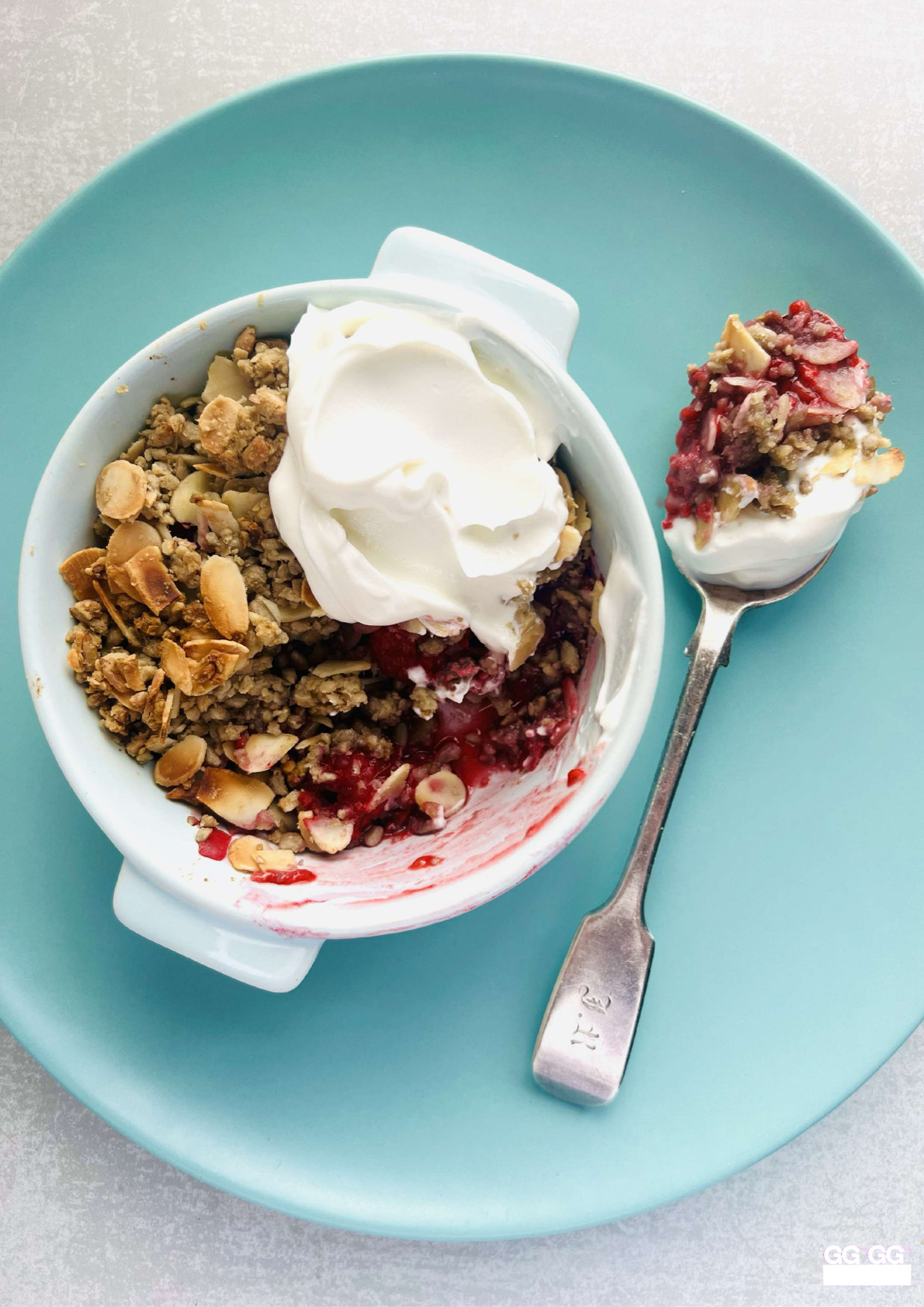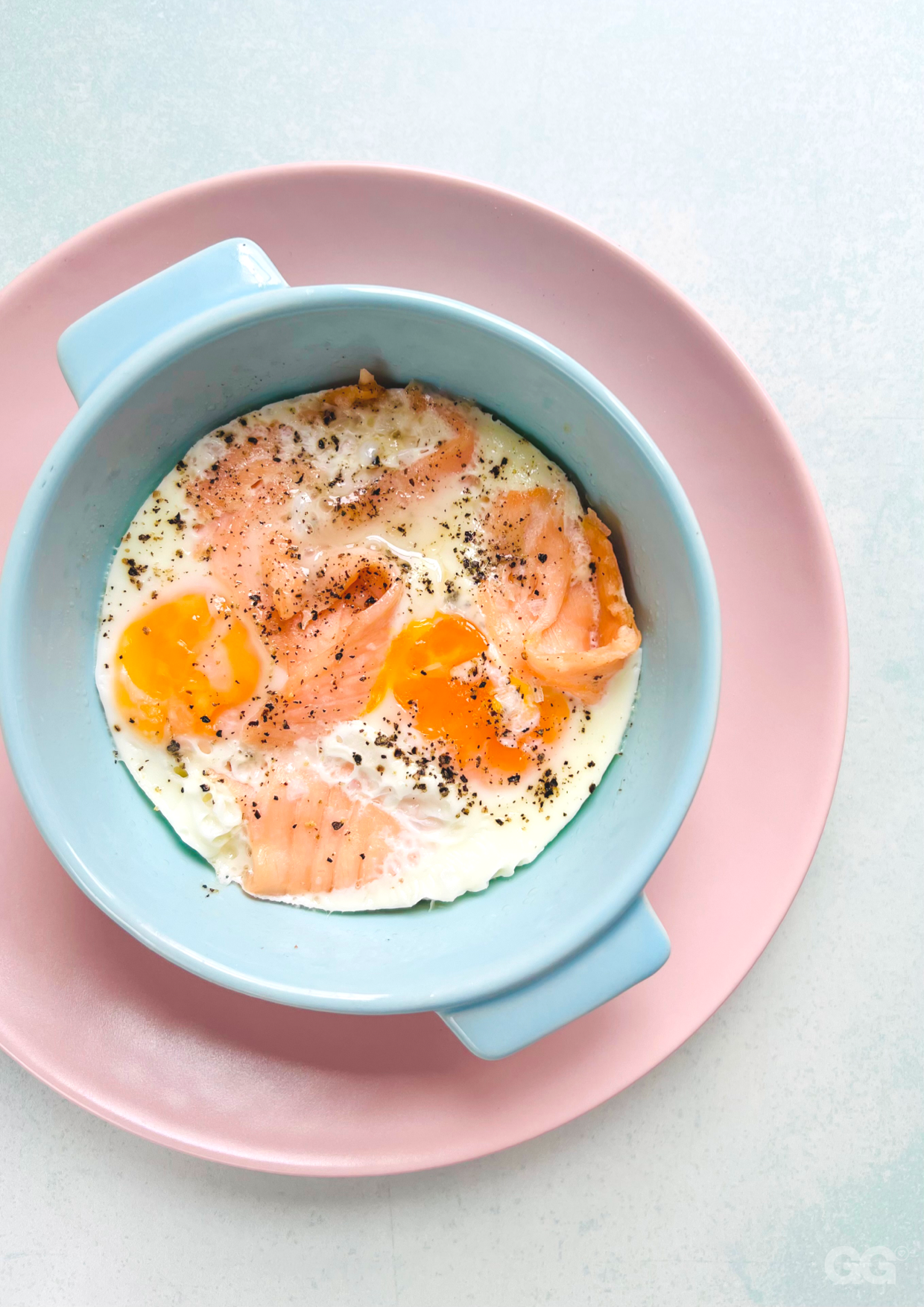SCIENCE EPISODE
Why 10 Eggs a Day is Fine: The Science of Cholesterol & Heart Health
Hello angels, and welcome back to the Glucose Goddess Show. I am Jessie Inchauspé, a French biochemist very interested in helping you understand your body, food, and health.
Today we’re going to talk about the humble egg. Eggs — my gosh, you guys — eggs have had quite the reputation journey over the decades.
I still meet people who think that eggs are really bad for your heart and are going to give you heart disease; there are still some doctors that believe this. So we need to have a deep look at what’s going on with eggs, what they actually do to our health, because many of us are still stuck in the ’90s when it comes to what eggs do to us — and many things from the ’90s we’ve moved on from — so it’s time to move on from bad egg science. Let’s get into it.
First things first: what is in an egg? This is an egg: we have the yellow — the yolk — and we have the white. The yolk is mostly fat, with 5 grams of fat of which 185 milligrams are cholesterol (important word: cholesterol, for this episode); it has 3 grams of protein and a ton of vitamins, minerals, antioxidants that are super healthy and good for us. The egg white is basically just water — ~90% water — 4 grams of protein, no fat, no cholesterol. Because the cholesterol in eggs was seen as something really bad, people in the ’90s started having egg-white omelets: they would get rid of the yolk with the “bad” cholesterol and just have the white, because the belief was “cholesterol in the egg will give you heart disease.”
Where did this belief originate? In the 1950s, with one of the most famous early nutrition studies: the Seven Countries Study by a man called Ancel Keys. In his study he published very important, famous graphs showing a perfect correlation between how much fat was consumed in a country and how many people died of heart disease in that country. As you can see here — Japan, Italy, England and Wales, Australia, Canada, USA — fat consumption goes up and deaths by heart disease go up. He had the same kind of graph for cholesterol (a type of fat): if a country eats a lot of fat, they eat a lot of cholesterol, and total cholesterol consumed was “perfectly” associated with death from heart disease. The world kind of blew up: Ancel Keys was on the cover of TIME; scientists and doctors were finally like, “Oh my god, we have the answer for all these heart disease cases that are going up — it must be the fat and the cholesterol we’re eating.” Everybody accepted that if you eat cholesterol and fat, you’ll have a higher risk of dying of heart disease; they thought it meant you would get cholesterol and bad fats in your arteries and die of heart disease. This was the belief.
Time for a quick break to tell you about the supplement I have developed: Anti-Spike Formula. In my years of research I’ve understood one key thing: keeping our glucose levels steady is the foundation of physical and mental health — no question — and if I could only take one supplement for the rest of my life to help me reduce glucose spikes and keep levels steady, it would be Anti-Spike Formula. I created Anti-Spike with two really powerful natural plant molecules in it. The first is mulberry leaf extract and — listen to this — in a review of 12 randomized clinical trials on over 600 people, scientists found that mulberry leaf extract significantly reduces our glucose spikes after a meal by up to 40%; it also significantly reduces our insulin spike after a meal by up to 40%, and it reduces our fasting glucose levels by 8 milligrams per deciliter after just two months. This molecule reduces the absorption of glucose in our bloodstream; it slows how quickly starches turn to glucose, therefore creating a massive reduction in the glucose spike of our meal. The second main molecule in Anti-Spike Formula is a molecule from lemon called eriocitrin: it’s the molecule that makes lemons yellow but also has a really cool effect on our gut — it basically helps our gut produce more GLP-1.
Clinical trials show GLP-1 production increases by 17% after just two months of taking it; more GLP-1 means healthier glucose levels. I take two capsules of Anti-Spike Formula every single day before the meal of my day highest in carbs and sugars. Go to anti-spike.com to see all the science behind these ingredients, to see testimonials from thousands of people who’ve tried it, and to order your own Anti-Spike Formula bottle and try it for yourself.
Then there was another study published in 1961 — the Framingham Heart Study, also very famous — and researchers reported that high cholesterol, high blood pressure, and smoking were major heart disease factors. Again people were like, “Oh my god, high cholesterol is going to make me have heart disease; so if I eat cholesterol from any foods containing cholesterol — like eggs — I’m going to get heart disease.” Everybody believed this; it was accepted, and it led to one of the most damaging public-health campaigns/guidelines still affecting our health today: the movement of low-fat diets. In 1977 the Dietary Guidelines and the American Heart Association said you should not eat more than 300 milligrams of cholesterol per day — so no more than two eggs per day — again because they believed eating cholesterol would give you heart disease. People started fearing animal fats from eggs to full-fat yogurt, and started eating really low-fat products — but to make them taste good, manufacturers put a lot of sugar. People started eating lots of sugar; this turned out to be disastrous for our health, but people didn’t know then. Turns out there were fundamental problems with the research that started all this.
For instance, in the Seven Countries Study Ancel Keys left out countries where there was high fat consumption but low heart-disease mortality (like Germany, like France), because they didn’t fit the narrative. Second, these studies were associative — they just saw correlations. It’s like saying, “People who have long toenails watch a lot of TV”; that doesn’t mean TV causes long toenails. There were no clinical trials showing causation; drawing conclusions from associative evidence is dangerous because of confounders. Even though there were problems, the guidelines continued; in the 1980s the Dietary Guidelines for Americans reinforced the 300 mg daily cholesterol limit, often saying you should eat fewer eggs, and this was mirrored across the world — UK, Australia, France, Canada, China, Japan — and the WHO.
Furthermore, any doctor who went to medical school in the ’70s/’80s/’90s was told that eating cholesterol will give you heart disease. Since then we’ve thankfully learned the truth: eating cholesterol does not cause heart disease; eating eggs is not bad for your heart. In the early 2000s scientists looked more closely. What exactly is cholesterol, and why the bad rep? Cholesterol is a molecule essential to life; it creates our cell membranes (we’re composed of trillions of cells), is essential for hormones, and creates the protective shield around our neurons. It’s very important. In diseases where people cannot make cholesterol, you see malformations and issues with development and cognition. Cholesterol is not to be feared. The key discovery that shifted understanding: the cholesterol you eat does not become the cholesterol in your blood vessels. The liver produces ~80% of the cholesterol we need; only ~20% comes from diet. Most of the cholesterol you eat you excrete; your body makes what it needs, and only a small fraction of dietary cholesterol makes it in.
Even Ancel Keys said in 1977: “There is no connection whatsoever between cholesterol in food and cholesterol in blood.” A big 2009 review, “Is there a correlation between dietary and blood cholesterol?”, looked at meta-analyses on dietary and blood cholesterol and heart disease, and confirmed that dietary cholesterol — especially from eggs — does not “significantly impact blood cholesterol or increase cardiovascular risk” for most people.
After this and mounting evidence, in 2015 the US Dietary Guidelines were updated: cholesterol limits were removed; no longer a limit on eggs; they said what actually matters is saturated fats and trans fats, but eating cholesterol-containing foods was no longer an issue, thanks to robust science disproving the previous belief.
What do we do with all this information? You guys know I’ve been doing my glucose hacks religiously — they’re the foundation of my dietary habits — but adding the molecules in Anti-Spike has really allowed me to get to the next level in a few areas: 1) bloating — I feel so much better; 2) energy levels — super consistent, eagle energy all day; 3) cravings for sugar — I love sugar and want to eat chocolate all the time, and Anti-Spike has given me a superpower when it comes to cravings; I don’t feel controlled by them anymore at all. I know these natural molecules are going to help my long-term fasting glucose and fasting insulin levels — key to physical and mental health and healthy aging.
So go to anti-spike.com to see the science, testimonials from thousands of people who’ve tried it, and to order your own Anti-Spike Formula bottle and try it for yourself.
Okay, first piece of important information: you don’t have to fear eggs. Eggs are really healthy — they’re amazing; I have eggs every single day. There doesn’t need to be a limit on how many you consume; cholesterol in eggs is not damaging. But we should still look at heart disease and the latest evidence/hypotheses. It’s a two-factor approach: first, small dense LDL particles of cholesterol; second, inflammation and oxidation of particles in your bloodstream.
How do we avoid unhealthy fats and avoid oxidation? Reduce sugar, because sugar (and high insulin/glucose and fructose) worsens both: it prompts your liver to produce small-particle LDL and oxidizes particles. So instead of orange juice and oats in the morning (carbs that turn to glucose), have eggs — I’m not kidding: eggs are better for your heart than oats and juice.
There’s a great study: “One egg a day improves inflammation when compared to an oatmeal-based breakfast without increasing other cardiometabolic risk factors in diabetic patients.” This shows that, in people with diabetes, replacing porridge with eggs reduces inflammatory markers linked to problematic heart disease. Eggs are better than many common breakfasts, and better for our heart than many sweet, starchy, highly processed morning foods.
Also avoid trans fats — found in hydrogenated oils such as margarine. In the low-fat movement people replaced butter with emulsified vegetable-oil spreads; that stuff is terrible for you: it contains trans fats clearly linked to heart disease.
Avoid processed vegetable-oil-based solidified “butterish” products. Another key factor to reduce heart-disease risk: reduce glucose spikes. Studies show that even with normal fasting glucose (not prediabetic), daily glucose spikes harm blood-vessel cells.
Two studies: “Postprandial hyperglycemia as an etiological factor in vascular disease” and “Oscillating glucose is more deleterious to endothelial function and oxidative stress than mean glucose in normal and type 2 diabetic patients.” Managing glucose is key to healthy heart and vessels. If you want my 10 glucose hacks to manage spikes easily — without giving up foods, just by understanding order and timing — download the PDF in the episode description.
Finally, most doctors still measure “total cholesterol” for heart risk; total cholesterol is not a good predictor (e.g., 50% of people who have a heart attack have normal total cholesterol). We have to dig deeper. Here’s a bullet-point list of lab tests you should run to assess heart-disease risk: 1) Triglycerides-to-HDL ratio (measure triglycerides and HDL; divide triglycerides [mg/dL] by HDL [mg/dL]; you want the result < 2 — higher is problematic — it reflects small dense LDL burden). I made another PDF in the description with these tests and reference ranges. 2) C-reactive protein (inflammation) — as low as possible, close to zero. 3) ApoB — a measure of all potentially problematic atherogenic particles — as low as possible. 4) Coronary artery calcium score — as low as possible. 5) Insulin resistance — as low as possible; measure HOMA-IR (explained in the PDF). Finally, remember: “bad cholesterol” as LDL alone is not a very good predictor; we need to dig deeper — total cholesterol and LDL alone don’t give an accurate enough picture.
Now we know eggs are not bad for us; eggs are like nature’s multivitamin — many minerals and fat-soluble vitamins — fantastic. They’re a good source of choline. In terms of protein, eggs help, but they don’t contain that much protein — about 7 grams per egg — and if you’re 70 kg (150 lb) like me, you need ~150 g of protein per day; that would mean ~20 eggs. That said, even if they’re not the best protein source gram-for-gram, they’re a great way to start the day: you can have 3 or 4 in the morning to get your protein up, maintain muscle mass, and feel really good.
If you’re curious about protein — which I love to talk about because it’s key to eat enough — I also have a third free PDF in the description to calculate how much protein you should be eating to maintain or grow muscle (the goal), plus which foods contain how much protein. Lots of free resources for you.
I hope this helped, that you learned a bit, and that you’re no longer scared of eggs — eggs are nice; they’re not mean; they won’t bite you. Eat them!
I’ll see you next time.
 Anti-Spike Supplement
Anti-Spike Supplement
 The Recipe Club
The Recipe Club
 Course
Course
 50 Breakfast Recipes
50 Breakfast Recipes
 50 Veggie Starter Recipes
50 Veggie Starter Recipes
 20 Vegan Recipes
20 Vegan Recipes
 20 Gluten-Free Recipes
20 Gluten-Free Recipes
 The 10 Glucose Hacks
The 10 Glucose Hacks
 Vinegar
Vinegar
 Alcohol
Alcohol
 Fasting
Fasting
 GLP-1
GLP-1
 What to Eat Before & After Exercise
What to Eat Before & After Exercise
 Protein
Protein
 PCOS
PCOS
 Menopause
Menopause
 My MRI Story
My MRI Story
 Breakfast
Breakfast
 Supplements
Supplements
 Clothes on Carbs
Clothes on Carbs
 Eggs & Cholesterol
Eggs & Cholesterol
 Chocolate
Chocolate
 Food Labels
Food Labels
 Veggie Starters
Veggie Starters
 Move After Eating
Move After Eating
 Why Glucose Matters
Why Glucose Matters
 Glucose Revolution
Glucose Revolution
 The Glucose Goddess Method
The Glucose Goddess Method
 9 Months That Count Forever
9 Months That Count Forever



















